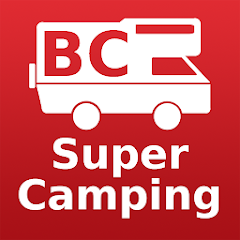Kelowna Marina Bruce Knight TOTA
Road and Driving Information
Canadians drive on the right side of the road (which is the same as the US) and use the metric system for distances and speeds. Speedometers and odometers on cars and RVs (depending on where RVs are manufactured) will display or be set to kilometres though many vehicles will show miles in a smaller numeric format. Anyone driving in British Columbia should familiarize themselves with road safety. The Insurance Corporation of British Columbia (ICBC) has a webpage dedicated to road safety tips, including towing a recreational trailer.
Fuels
All common fuels—unleaded gasoline, diesel and propane—are widely available at service stations (commonly called gas stations in Canada) in British Columbia and are sold in litres. 4.5 litres = 1 Canadian gallon; 3.78 litres = 1 American gallon.
Driver’s Licence Requirements
Anyone operating a car or RV in Canada must have a valid driver’s licence from their country of origin and valid auto insurance (of their own or purchased with the rental). Foreign driver’s licences are generally valid for the first six months of crossing the international border, while an International Driving Permit (available in one’s home country) can be used for one year.
Drivers moving to British Columbia have 90 days to switch over their licence. Visit the ICBC’s webpage on Moving and Your Licence for more information.
Speed Limits
Speeds are clearly posted alongside roads and highways on signs or display panels and are in kilometres per hour (km/hr). The maximum speed limit in BC is 120 km/hour (75 mph). Other limits are:
- 30 km/hr (20 mph) in school zones
- 50 km/hr (30 mph) in built up areas
- 80 km/hr (50 mph) along rural roads
- 110-120 km/hr (70-75 mph) along major highways and expressways.
Road Maps
Up-to-date road maps of British Columbia are available from British Columbia Visitor Centres throughout the province or can be purchased at gas stations, book and convenience stores.
Safety Requirements and Driving Under the Influence
The use of safety belts (commonly referred to as seat belts in Canada), vehicle child restraints (car seats) and motorcycle helmets are mandatory in British Columbia. Bicycle helmets are also mandatory in the province and all bikes must be equipped with a front white headlight and a rear red light/reflector.
Impaired driving is a criminal offence in Canada. Under Canadian law the limit for driving under the influence of alcohol is 0.08; however, under BC law police can issue an impaired driver prohibition with a blood-alcohol content of 0.05 or higher. Breath samples may be requested by a police officer and refusing a test could result in criminal charges.
There are new laws in Canada regarding drug-impaired driving. The ICBC has a webpage dedicated to this.
Road Conditions
For information on road conditions 24 hours/day visit the DriveBC website, which is operated by the Ministry of Transportation and Infrastructure.
The information on the Conditions and Events page provides the reported condition of a particular provincial road at the time the route was last verified; online information is available for most major provincial highways. Users can see web camera shots for many highway locations. The website also includes links to other pages of related interest such as various US–Canada border crossings.
Severe weather, sudden temperature changes and snow or rainfall can cause road conditions to change rapidly. For this reason, the website information may not reflect changes that have taken place since the last scheduled update. Drivers are reminded to adjust their speed and driving actions to the conditions. Drive smart! Drive safe!
Winter Weather Driving in British Columbia
From October to April the weather can serve up winter driving conditions in all parts of the province. This varies from wet roads to fog to snow and ice. Colder temperatures always challenge a vehicle while winter driving demands the vehicle’s best possible performance.
It is advisable to winterize the vehicle by having a qualified service centre check items such as anti-freeze, the battery, lights, wiper blades and tread on tires.
Always consult the local and regional weather forecast and Drive BC’s road condition reports before setting out. The provincial government also provides information on winter chain and tire routes.
The ICBC provides excellent information on tips for driving in poor conditions, including winter driving. Keep in mind the following when driving in snowy and cold weather:
Tips for navigating icy or snowy roads
- Slow down
- Accelerate gently and steer smoothly
- Carefully test your braking and steering at a very slow speed
- Allow extra space margins
- Slow down before curves and corners
- Go down icy hills in a low gear
- Avoid passing
- If your wheels lock, ease off the brakes then re-apply them to maintain steering control.
Tips for driving at freezing temperatures
- Look for black ice, thin and smooth ice that appears transparent over dark asphalt. (If the pavement looks shiny and black instead of grey-white, be prepared!)
- Be careful when driving over shaded areas as they may be iced over.
- Be mindful of bridges and overpasses. Ice tends to form on them before it does elsewhere on roads.
- Watch out when driving through intersections. Car exhaust and fallen and packed snow cause them to ice up quickly.
Vehicle Accidents
Any persons involved in an automobile accident worse than a ‘fender bender’ are advised to contact the police on 911 or the Royal Canadian Mounted Police (RCMP). Insurance companies should also be contacted (whether the driver has employed personal coverage or whether the plan is via the car/RV rental).


